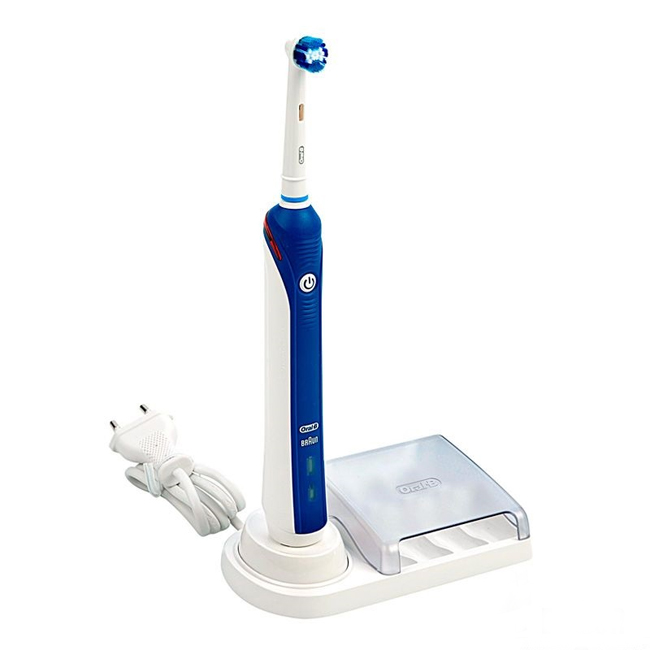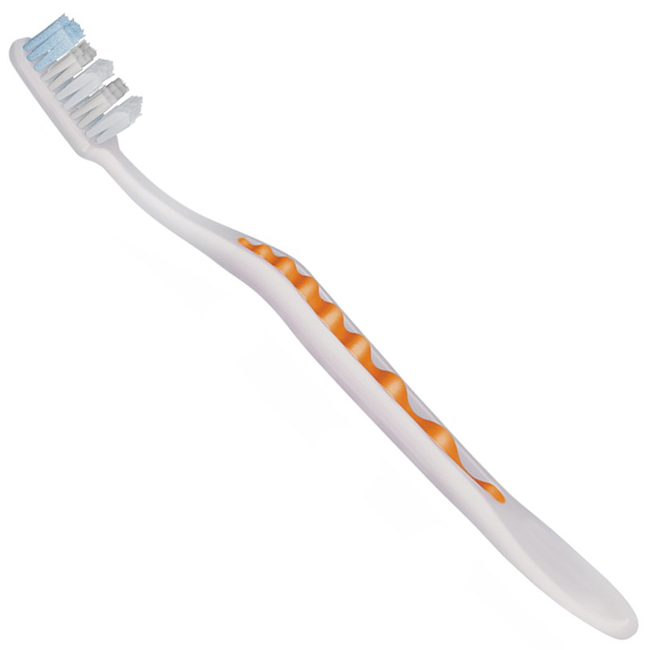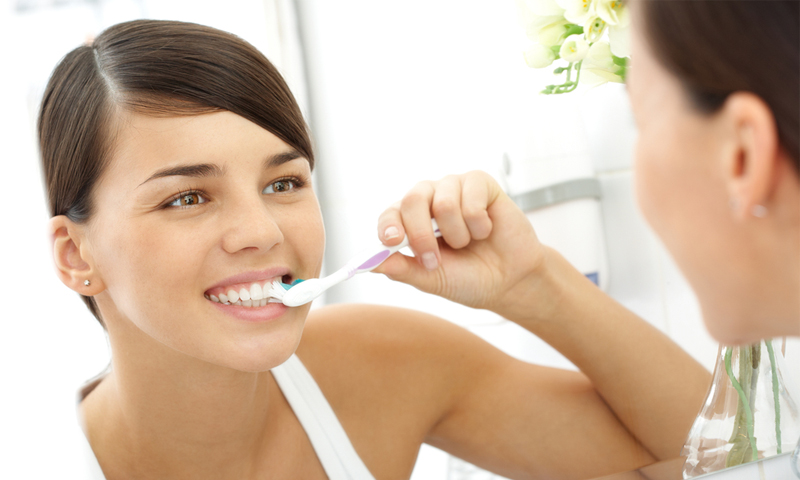High-quality care of teeth is a guarantee of their health for many years. Daily oral hygiene helps to remove plaque and age spots, prevents the formation of tartar, and also restores the natural whiteness of teeth. If the toothbrush is chosen incorrectly, then it will not only not perform the functions listed above, but may also harm hard and soft tissues of the mouth. Our article will help you get a toothbrush that is right for you.

Content:
The best manufacturers of toothbrushes - which company to choose
If you purchase products from a reputable manufacturer, then the probability of buying low-quality goods is reduced to a minimum.
We have prepared a rating of companies you can trust:
- Oral-B;
- Aquafresh;
- Braun;
- R.O.C.S.
Typically, the cost of products of these brands is slightly higher than that of lesser-known manufacturers. This is due not only to a powerful advertising company, but also to the use of the latest technological equipment, high-quality raw materials and the experience of the world's best specialists in the field of aesthetic dentistry.
The principle of operation and the design of toothbrushes

The toothbrush is designed for daily oral hygiene.
Despite the huge variety of these products, the design is similar for everyone:
1. Head with bristles.
2. Pen holder.
In conventional classic brushes, the brush head is non-removable, but in electric models (almost all) it changes. In some classic products there is a flexible connection between the head and the handle, this allows you to adjust the degree of pressure in the process of brushing your teeth. It optimizes the massage and cleansing properties of the brush.
The shape of the head can be made in a different design, but in the best brushes it is aimed at the safety of the product. The fibers in the brush head are collected in bundles, which are usually arranged in 3-4 rows. The brush should not injure the soft or hard tissues of the tooth; therefore, it is often rounded without sharp areas.
The brushes may have the following trimming of bristles:
1. Skewed - it allows you to clean the molars;
2. Smooth - this form increases the surface to be cleaned and provides maximum contact with all parts of the dentition;
3. Multi-level - suitable for effective removal of plaque in narrow gaps, in the lateral surfaces of teeth.
The brushes also differ in the direction of the bristles. High, upright, perfectly remove plaque between teeth. The same villi, only shorter in length, remove plaque from the chewing surfaces.
If oblique tufts are present in the brush, they clean the cervical area of the teeth. In some models, a high tuft of inclined bristle is present at the end of the brush head; it serves to clean hard-to-reach areas.
Types of toothbrushes
Classic (manual)

This is the traditional most common toothbrush. It combines the availability and rather high efficiency of oral hygiene.
The design is extremely simple - the handle-holder at the end of which the fixed head with bristles is located. Brushing the teeth is done by mechanical hand movements for 5-7 minutes.
It is recommended to change this brush once every 3 months, since after this time the bristles begin to deform and the quality of cleaning deteriorates.
Advantages:
- low cost;
- huge selection;
- simple and easy construction;
- good cleaning quality.
Disadvantages:
- some effort is needed for cleaning, which is inconvenient for people with limited mobility;
- Compared with electric models, brushing with classical brushes requires 2-3 times longer.
Electric

The devices are designed for maximum ease of brushing. Devices are standard, sound and ultrasound. They differ in the speed of movement of the brush head.
Such devices can have several modes of operation and methods of rotation. Their design includes: a brush head, a head-holder head and a handle, which is equipped with an engine, a power source, a control unit.
There are models with separately moving tufts of bristles. There are also brushes that brush 2 rows of teeth at the same time using a double head. It is recommended to change the nozzles with the frequency of replacing ordinary hand brushes, i.e. every 3 months. Devices operate on batteries or battery.
Advantages:
- the recommended duration of brushing is 2 minutes;
- high-quality cleaning of teeth from plaque;
- gum massage;
- no need for effort to clean, which is especially convenient for people with muscle atrophy or fractures;
- You can change the nozzles, so the whole family can use a single brush.
Disadvantages:
- Ultrasonic brushes are not recommended for use in the presence of seals, veneers, braces, because the high frequency of oscillation of the bristles causes microvibration of the hard tissues of the tooth, under the influence of which the binder component is gradually destroyed;
- If you exceed the recommended brushing time, the brush can damage the tooth enamel and cause its sensitivity;
- contraindications: periodontal surgery, tooth mobility of the third degree, increased abrasion of teeth;
- high price.
- See also: ranking best electric toothbrushes
Soft

The thickness of the bristles in the soft brushes is much smaller (fiber diameter is 0.15-0.2 mm) than that of all the others, therefore more bristles are required per brush. As a result, the cost is slightly higher than other dentifrices. Bristles are made of soft synthetic fiber.
Such products are recommended for children, people with sensitive teeth, with periodontal disease, with non-carious damage to the enamel, with bleeding gums, and with diabetes.
Advantages:
- brush gently cares for teeth and gums;
- gentle massage effect;
- great after surgery, with irritation of the mucous membrane of the mouth, with diseases of the gums;
- soft protection against caries.
Disadvantages:
- not effective for cleaning healthy teeth;
- poor quality of cleansing interdental spaces, hard-to-reach areas, which can cause the appearance of age spots.
Medium hardness

The fiber diameter of such brushes is higher than that of soft ones, but lower than that of hard ones - up to 0.22 mm. The bristles are optimally flexible, they are able to clean the interdental spaces and the gingival sulcus.
These products are most popular among adults. They are recommended for use with healthy teeth and gums.
Advantages:
- brush quality cleans teeth, is considered the most effective;
- suitable for regular use;
- perfectly massages the soft tissues of the oral cavity;
- creates optimal pressure on the teeth and gums;
- prevents the formation of tartar.
Disadvantages:
- not suitable for use in the presence of dental diseases, as teeth and gums need more gentle care.
Tough

The diameter of the fibers in such brushes exceeds 0.22 mm. They are recommended for people who notice a large amount of plaque on the teeth, frequent formation of tartar, in the presence of orthodontic structures (dentures, braces or a bridge).
Use the product with care not to damage the enamel or gum. If the brush is too hard, you can try to soften the bristles by holding them in boiling water for several minutes.
Advantages:
- powerful gum massage;
- effective removal of plaque;
- prevention of tartar.
Disadvantages:
- not suitable for use in the presence of diseases of the teeth and / or gums, as they may aggravate their condition;
- not recommended for permanent use, as it can damage the enamel, even healthy teeth;
- with intensive pressure and sudden movements during brushing, the brush can damage the gums.
Toothbrush selection options

The location and length of the bristles
The brush can have a different inclination and length of the villi. This allows the product to clean hard-to-reach areas of the dentition.
Rigidity
To choose a brush for this parameter, it is necessary to build on the condition of the teeth and gums.
Some modern brushes combine several levels of hardness. Such bristles have several combinations of materials that are used to make bristles, for example, nylon and polymer.
The central setae are most rigid and often shorter than the others; the external setae are softer and often longer.
Beams
The brush should have a lot of tufts, the ends of which should be rounded and polished, so they will not traumatize the gums.
Villi should be made of synthetic material (it is durable and hygienic), in case of allergy to it, you need to purchase a brush with bundles of natural fibers.
The shape and length of the cleaning head
For an adult, it is better to purchase a brush with a head length of 25-27 mm, for children - up to 22 mm. The brush should not have sharp transitions, so as not to damage the soft tissues of the mouth. It is better to purchase a product of a round or oval shape - they are more convenient to use.
A pen
Many models have non-slip handles with rubberized inserts that are comfortable to use, even when wet.
Specifications
This parameter applies to electrical models that may have different modes of operation:
1. Reciprocating motion;
2. Up down;
3. Gum massage;
4. Whitening
Additional functions
Some brushes may have advanced functionality:
1. A wear indicator that alerts the user to replace the brush head;
2. Cover for cleaning the tongue on the back of the brush head;
3. A timer (in electrical models) that alerts you to the end of the recommended cleaning time;
4. Pressure sensors that indicate strong pressure on the enamel.
Weight
Classic brushes are light and simple in design, but electric models can be heavy due to the large number of parts in the handle.
It is better to buy a brush, the weight of which does not exceed 200 g, otherwise hand may get sick from brushing the teeth of the user.
Which toothbrush to choose

1. For a child, it is better to buy a toothbrush with soft bristles, because Loose enamel requires careful care. Also, such products are suitable for various diseases of the teeth and gums.
2. Brushes with medium hardness are suitable for people with healthy teeth.
3. If periodic intensive cleaning of plaque is necessary, then it is necessary to purchase a brush with hard bristles.
4. Choosing between electric and classic brushes, you should rely on your own preferences and indications for use. For example, electric models will not suit everyone, they are recommended to be used in the absence of problems with gums and enamel, and classic ones are universal brushes, among which everyone can find a suitable product.
How much does a toothbrush cost?

1. The cost of a classic manual toothbrush: from 100 to 1700 p.
2. The cost of electric standard toothbrushes: from 850 to 5000 p.
3. The cost of electric sonic toothbrushes: from 1200 to 11000 p.
4. The cost of electric ultrasonic toothbrushes: from 2000 to 15000 p.
It will be interesting to friends too









